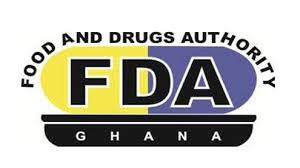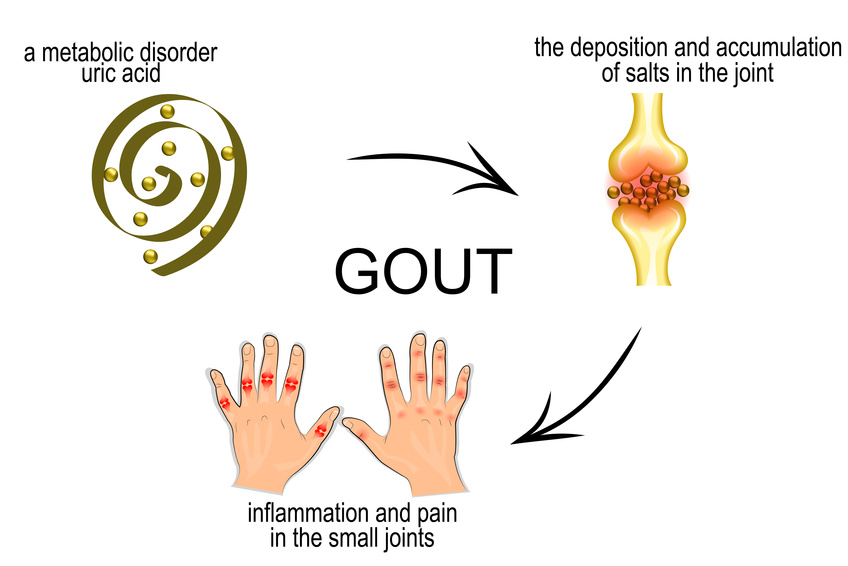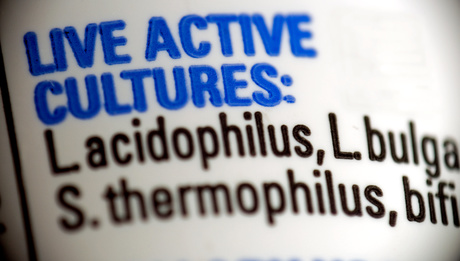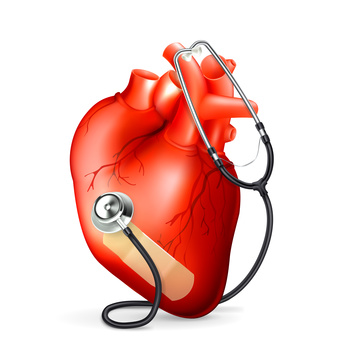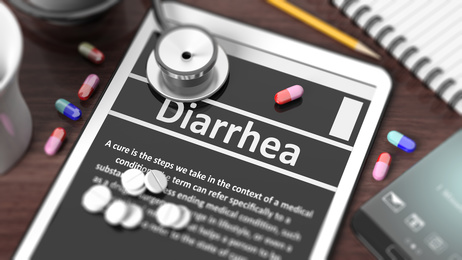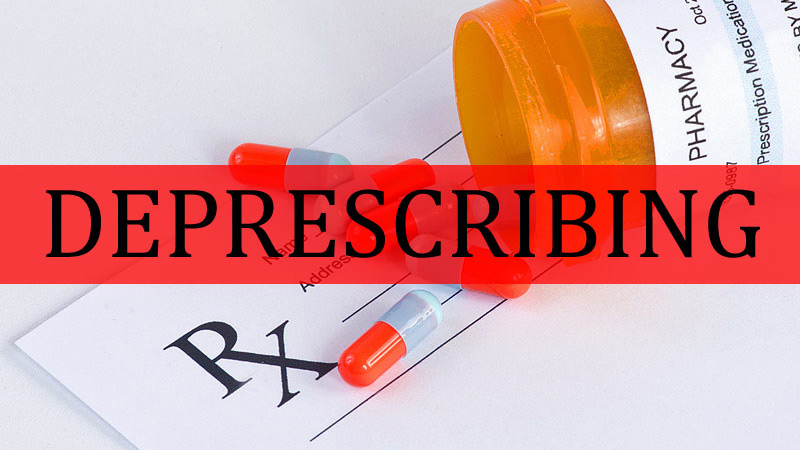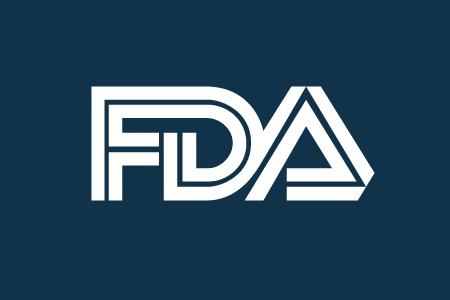A refresher for every clinician
Contrast media (contrast agents or dyes) are widely used as adjuncts to diagnostic visualisation techniques such as radiography (X-ray), magnetic resonance imaging (MRI), and ultrasound imaging. These agents are broadly classified based on WHO’s ATC system as shown below:
1) Radiocontrast media, Iodinated e.g., Diatrizoic acid (Amidotrizoate or Diatrizoate), Iohexol, Iopamidol, Iopromide, Iotroxic acid (or Meglumine iotroxate)
2) Radiocontrast media, Non-iodinated e.g., Barium sulfate
3) Magnetic resonance imaging (MRI) contrast media e.g., Gadobutrol, Gadopentetic acid
4) Ultrasound contrast media e.g., Optison® (GE Healthcare) – contains an albumin shell and octafluoropropane gas core
RADIOGRAPHIC OR X-RAY CONTRAST MEDIA (RADIOCONTRAST MEDIA)
Radiocontrast media are needed for delineating soft tissue structures such as blood vessels, stomach, bowel loops, and body cavities that are not otherwise visualized by standard X-ray examination. The contrast media in this group, which all contain heavy atoms (metal or iodine), absorb a significantly different amount of X-rays than the surrounding soft tissue, thereby making the exposed structures visible on radiographs.
The radiocontrast media are subdivided into iodinated (iodine-containing) and non-iodinated (metal-containing) compounds.
Radiocontrast media, Non-iodinated
Barium sulfate is a metal salt which is chiefly used for gastrointestinal imaging. It is not absorbed by the body and does not interfere with stomach or bowel secretion or produce misleading radiographic artefacts. Barium sulfate may be used in either single- or double-contrast techniques or computer-assisted axial tomography.
Single-contrast technique can be positive or negative. Positive contrast imaging is achieved by introducing a contrast medium (i.e., barium sulfate) into the GI tract to increase the density and enhance absorption of the X-rays. In negative contrast imaging, a gas (air, oxygen, or carbon dioxide) may be used to allow the X-rays to penetrate more easily. In double contrast examinations, both gas and contrast medium are used together. The gas is introduced into the GI tract by using suspensions of barium sulfate-containing carbon dioxide or by using separate gas-producing preparations based on sodium bicarbonate. Air administered through a GI tube can be used as an alternative to carbon dioxide to achieve a double-contrast effect.
Radiocontrast media, Iodinated
Iodinated contrast media all have a common functional group – tri-iodinated benzene ring. The 3 iodine atoms covalently bonded to benzene are essential for absorbing X-rays and help reduce the risk of toxic effects from free iodide. Based on the benzene ring structure and the presence (ionic) or absence (non-ionic) of carboxylate ion (-COO–), these agents are classified into 4 categories:
- Ionic high-osmolarity monomers: one tri-iodinated benzene ring plus carboxylate ion. These agents are water-soluble, nephrotropic, high-osmolar radiocontrast media e.g., Meglumine amidotrizoate, Sodium amidotrizoate
- Ionic low-osmolality dimers: two tri-iodinated benzene rings plus carboxylate ion. These agents are water-soluble, hepatotropic, low-osmolar radiocontrast media e.g., Meglumine iotroxate
- Non-ionic low-osmolality monomers: one tri-iodinated benzene ring without carboxylate ion. These agents are water-soluble, nephrotropic, low-osmolar radiocontrast media e.g., Iohexol, Iopamidol, Iopromide
- Non-ionic iso-osmolar dimers: two tri-iodinated benzene ring without carboxylate ion. These agents are water-soluble, nephrotropic, iso-osmolar, high-viscosity radiocontrast media e.g., Iodixanol
The ionic agents have negative charge conferred by the carboxylate ion and are usually available in salt forms e.g., as sodium or meglumine salts of tri-iodinated benzoic acid.
The first-generation agents are the ionic monomeric media e.g., Amidotrizoates; available as Meglumine amidotrizoate and Sodium amidotrizoate. Although both salts have been used alone in diagnostic radiography (including computer-assisted axial tomography), a mixture of both is often preferred so as to minimize adverse effects and to improve the quality of the examination. Amidotrizoates are used in a wide range of procedures including urography, and examination of the gallbladder, biliary ducts, and spleen. Owing to their high osmolality, they are associated with a high incidence of adverse effects.
The osmolality for a given radiodensity which depends on iodine concentration, can be reduced by using an ionic dimeric medium such as Meglumine iotroxate, which contains twice the number of iodine atoms in a molecule, or by using a non-ionic monomeric media such as Iohexol, Iopamidol or Iopromide. Low osmolality radiocontrast media such as iohexol are associated with a reduction in some adverse effects (see below), but they are generally more expensive. Iohexol is used for a wide range of diagnostic procedures including urography, angiography and arthrography, and also in computer-assisted axial tomography. Meglumine iotroxate is excreted into the bile after intravenous administration and is used for cholecystography and cholangiography.
Non-ionic dimeric media (e.g., Iodixanol) have the best ratio of radiodensity to osmolality but they tend to be more viscous. Increased viscosity can make intravascular injection more difficult, especially at high flow rates. This may be less an issue for nonvascular administration. More viscous contrast media are routinely warmed to 37°C so that adequate flow rates can be attained during intravenous injection.
MAGNETIC RESONANCE IMAGING (MRI) CONTRAST MEDIA
Contrast media may be used to enhance magnetic resonance images. MR contrast agents are subdivided based on magnetic properties:
(a) Paramagnetic contrast media e.g., Gadobutrol, Gadopentetic acid, Ferric ammonium citrate
(b) Superparamagnetic contrast media e.g., Ferumoxsil, Iron oxide (nanoparticles)
Paramagnetic compounds contain gadolinium or manganese and are used as complexes or chelates to reduce their toxicity. Example of gadolinium-based contrast media is gadopentetic acid. Superparamagnetic contrast media contain coated particles of iron compounds.
ULTRASOUND CONTRAST MEDIA
Contrast agents used to enhance ultrasound imaging consist of gas-filled microbubbles which provide a gas-liquid interface that reflects sound more effectively than blood alone, allowing blood flow to be more easily detected. The microbubbles consist of air or another inert gas and an outer shell (e.g., albumin, galactose). Example of commercially available microbubble contrast agent is Optison® by GE Healthcare. It has an albumin shell and octafluoropropane gas core.
ADVERSE EFFECTS OF CONTRAST MEDIA & THEIR MANAGEMENT
Excerpts from ESUR (European Society of Urogenital Radiology) Guidelines on Contrast Media
Contrast media generally have similar adverse effect profiles, but the incidence tends to be higher with the high-osmolality agents. Osmolality depends on the iodine concentration and for a given iodine content, this is highest for the ionic monomers and lowest for non-ionic dimers.
The adverse reactions are broadly classified as non-renal and renal.
Non-renal adverse reactions
Acute adverse reactions occur within 1 hour of contrast medium injection; usually mild to moderate. Common minor adverse reactions include rash, pain at the injection site, nausea, vomiting, and minor hemodynamic changes, which are all usually self-limiting. Acute severe reactions are usually anaphylactic or anaphylactoid and the risk is usually greatest in patients with asthma, atopy, or a previous reaction to an iodinated contrast agent.
Delayed adverse reaction to intravascular iodine-based contrast medium is defined as a reaction which occurs 1 h to 1 week after contrast medium injection. Late skin reactions similar in type to other drug-induced eruptions. Maculopapular rashes, erythema, swelling and pruritus are most common. Most skin reactions are mild to moderate and self-limiting. Management is similar to other drug-induced skin reactions e.g. antihistamines, topical steroids and emollients
Very late adverse reactions usually occur more than 1 week after contrast medium injection. They may include thyrotoxicosis (due to iodine-based contrast media) and nephrogenic systemic fibrosis (or NSF, due to gadolinium-based contrast media).
NOTE: The risk of an acute reaction to a gadolinium-based MRI contrast agent is lower than the risk with an iodine-based contrast agent, but severe reactions to gadolinium-based contrast media may occur.
Delayed skin reactions of the type which occur after iodine-based contrast media have not been described after gadolinium-based and ultrasound contrast media.
Factors predisposing to nonrenal adverse reactions to contrast media
- Previous adverse reactions
- History of asthma or bronchospasm
- History of allergy or atopy
- Risk of acute reactions usually greater with high-osmolality ionic contrast media; risk of delayed reactions is higher with the non-ionic dimers.
- Cardiac disease
- Dehydration
- Haematological and metabolic conditions (sickle cell anaemia, patients with thrombotic tendency, e.g. polycythaemia, myelomatosis or phaeochromocytoma)
- Renal disease
- Neonates, very old and infirm patients
- Anxiety and apprehension
- Sun exposure may increase the risk of developing delayed cutaneous reaction
- Medications (beta-blockers, interleukin 2 (a potent stimulator of the immune system), aspirin, NSAIDs)
Guidelines for first-line treatment of acute nonrenal reactions to all contrast media
The same reactions are seen after iodine- and gadolinium-based contrast agents and after ultrasound contrast agents. The incidence is highest after iodine-based contrast agents and lowest after ultrasound agents.
Nausea/Vomiting
Transient: Supportive treatment
Severe, protracted: Appropriate antiemetic drugs should be considered.
Urticaria
Scattered, transient: Supportive treatment including observation.
Scattered, protracted: Appropriate H1-antihistamine intramuscularly or intravenously should be considered. Drowsiness and/or hypotension may occur.
Generalized: Appropriate H1-antihistamine intramuscularly or intravenously should be given. Drowsiness and/or hypotension may occur. Consider Adrenaline 1:1,000, 0.1-0.3 mL (0.1-0.3 mg) intramuscularly in adults, 50% of adult dose to pediatric patients between 6 and 12 years old and 25% of adult dose to pediatric patients below 6 years old. Repeat as needed.
Bronchospasm
- Oxygen by mask (6-10 L/min)
- β-2-agonist metered-dose inhaler (2-3 deep inhalations)
- Adrenaline
Normal blood pressure
Intramuscular: 1:1,000, 0.1-0.3 mL (0.1-0.3 mg) [use smaller dose in a patient with coronary artery disease or elderly patient]
In pediatric patients: 50% of adult dose to pediatric patients between 6 and 12 years old and 25% of adult dose to pediatric patients below 6 years old. Repeat as needed.
Decreased blood pressure
Intramuscular: 1:1,000, 0.5 mL (0.5 mg),
In pediatric patients: 6-12 years: 0.3 mL (0.3 mg) intramuscularly; <6 years: 0.15 mL (0.15 mg) intramuscularly
Laryngeal edema
- Oxygen by mask (6 – 10 L/min)
- Intramuscular adrenaline (1:1,000), 0.5 mL (0.5 mg) for adults, repeat as needed.
In pediatric patients: 6-12 years: 0.3 mL (0.3 mg) intramuscularly; <6 years: 0.15 mL (0.15 mg) intra
Hypotension
Isolated hypotension
- Elevate patient’s legs
- Oxygen by mask (6-10 L/min)
- Intravenous fluid: rapidly, normal saline or Ringer’s solution
- If unresponsive: Adrenaline: 1:1,000, 0.5 mL (0.5 mg) intramuscularly, repeat as needed
In pediatric patients: 6-12 years: 0.3 mL (0.3 mg) intramuscularly; <6 years: 0.15 mL (0.15 mg) intramuscularly
Vagal reaction (hypotension and bradycardia)
- Elevate patient’s legs
- Oxygen by mask (6-10 L/min)
- Atropine 0.6-1.0 mg intravenously, repeat if necessary after 3-5 min, to 3 mg total (0.04 mg/kg) in adults.
In pediatric patients give 0.02 mg/kg intravenously (max. 0.6 mg per dose), repeat if necessary to 2 mg total.
- Intravenous fluids: rapidly, normal saline or Ringer’s solution
Generalized anaphylactoid reaction
- Ensure patent airway as needed
- Elevate patient’s legs if hypotensive
- Oxygen by mask (6–10 L/min)
- Intramuscular Adrenaline (1:1,000), 0.5 mL (0.5 mg) in adults. Repeat as needed.
In pediatric patients: 6-12 years: 0.3 mL (0.3 mg) intramuscularly; <6 years: 0.15 mL (0.15 mg) intramuscularly
- Intravenous fluids (e.g. normal saline, Ringer’s solution).
- H1-blocker e.g. Diphenhydramine 25-50 mg intravenously
Renal adverse reactions
Contrast-induced nephropathy (CIN) is a condition in which a decrease in renal function occurs within 3 days of the intravascular administration of a CM in the absence of an alternative aetiology. An increase in serum creatinine by more than 25% or 44 μmol/L (0.5 mg/dL) indicates CIN.
NOTE: The risk of nephrotoxicity is very low when gadolinium-based contrast media are used in approved doses.
Risk Factors for Contrast Medium-Induced Nephropathy
- Pre‐existing renal dysfunction, particularly when the reduction in renal function is secondary to diabetic nephropathy
- Conditions associated with reduced renal perfusion e.g., dehydration, CHF, myocardial infarction.
- Age over 70 due to the reduction in renal mass, function and perfusion which occurs with age
- Concurrent use of nephrotoxic drugs e.g., NSAIDs and aminoglycosides, potentiates the nephrotoxic effects of contrast media
- Intra-arterial administration of contrast medium. Intrarenal concentration of contrast media is much higher immediately after intra‐arterial injection than after intravenous administration
- High osmolality agents
- Large doses of contrast medium
- Multiple contrast medium administrations within a few days
DRUG INTERACTIONS
Co-administration of Iodine-based contrast media with Metformin
Metformin and iodine-based contrast media are eliminated via the kidneys. Administration of contrast agents in patients receiving Metformin can precipitate lactic acidosis, especially in patients with abnormal renal function. Symptoms of lactic acidosis include vomiting, somnolence, nausea, epigastric pain, anorexia, hyperpnoea, lethargy, diarrhoea and thirst.
Below is an outline of ESUR guideline recommendations for the use of iodinated contrast agents in patients receiving Metformin:
- Patients (eGFR ≥60 mL/min/1.73m²): Continue Metformin normally
- Patients receiving intravenous contrast medium (eGFR ≥45 mL/min/1.73 m²): Continue Metformin normally
- Patients receiving intra-arterial or intravenous contrast medium (eGFR 30-44 mL/min/1.73 m²): Stop Metformin 48 h before contrast medium and only restart Metformin 48 h after contrast medium if renal function has not deteriorated
- Patients (eGFR <30 mL/min/1.73 m² or with an intercurrent illness causing reduced liver function or hypoxia): Metformin is contra-indicated and iodine-based contrast media should be avoided.
- Emergency patients: Metformin should be stopped from the time of contrast medium administration. After the procedure, the patient should be monitored for signs of lactic acidosis. Metformin should be restarted 48 h after contrast medium if serum creatinine/eGFR is unchanged from the pre-imaging level.
NOTE: No special precautions are necessary when diabetic patients on metformin are given gadolinium-based contrast medium
Interaction with other drugs
- Nephrotoxic drugs: Cyclosporine, Cisplatin, Aminoglycosides, NSAIDs
- Beta-blockers: β-blockers may impair the management of bronchospasm and the response to adrenaline
- Do not mix contrast media with other drugs in tubes and syringes
References:
- Pasternak JJ, Williamson EE. Clinical Pharmacology, Uses, and Adverse Reactions of Iodinated Contrast Agents: A Primer for the Non-radiologist. Mayo Clin Proc. 2012 Apr;87(4):390–402.
- European Society of Urogenital Radiology [Internet]. [cited 2018 Nov 16]. Available from: http://www.esur.org/guidelines/
- Thomsen HS, Morcos SK. Radiographic contrast media: Radiographic Contrast Media. BJU Int. 2002 Jan 2;86:1–10


